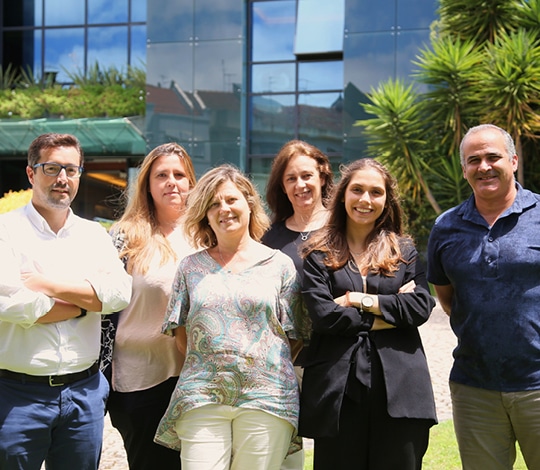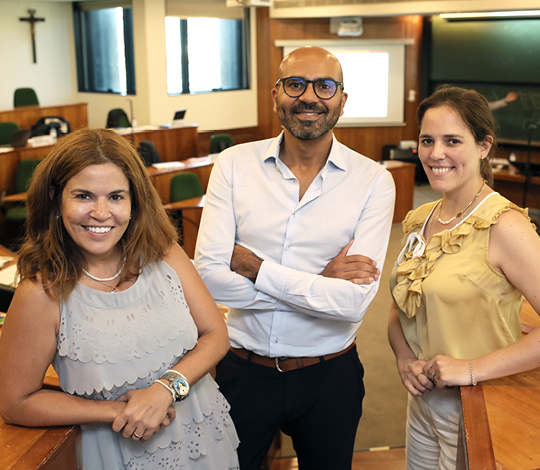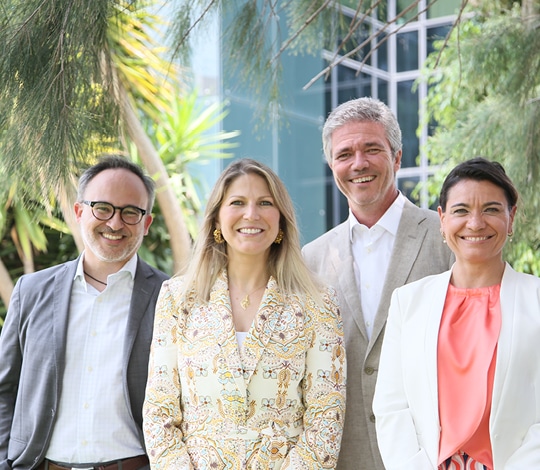Agostinho Abrunhosa
Professor de Operações, Tecnologia e Inovação da AESE Business School
Diretor do Executive MBA AESE
Business schools have conquered the world (Cornuel and Eric, 2007). After the Second World War, they had sustained growth, and between the 60s and 80s, they developed especially in Anglo-American countries. The 1990s saw the rise of European schools (Collet and Vives, 2013). Countries traditionally resistant to the concept, Germany and Japan also began to develop business schools (Clarke, 2008). Many schools linked to their universities or as private initiatives were developed during this period.
Today business schools are all over the planet, with a particular preponderance in countries with greater economic power (Antunes and Thomas, 2007; AACSB, 2021, p.8). The latest AACBS report states that 1,670 educational members from 123 countries belong to its network (AACSB, 2021, p.11). The estimated number of business schools in 2018 was 13,000 (Peters, Thomas and Smith, 2018). According to the AACSB, more than 250,0000 MBAs are enrolled worldwide (John A. Byrne, 2022). The number of Graduate Management Admissions Test (GMAT) tests taken between 2016 and 2020 was over 1,100,000 (GMAC, 2021).
Teaching and learning
It is one thing to teach and another to learn. In academia, when it comes to teaching, it is customary to give primacy to teachers over students (Martensson, Bild and Nilsson, 2008). Teachers and business schools are often criticised because they focus too much on teaching, content, techniques, PowerPoints and not on what students actually learn (Jones, 2015). Naturally, it is critical that teachers take care of what they teach, ensure they use the best teaching methods, choose the best content to transmit, and try to perform as teachers in the best possible way before, during, and after classes. However, this high level of execution may not be enough to obtain the learning desired by students, with a crucial component of the learning process on the learner’s side. Such learning also depends on numerous factors, some of which are beyond the learner’s control. The following quote illustrates that:
When applied in context, learning becomes more significant. Many business schools try to use experiential teaching methods that actively involve participants (Pfeffer and Fong, 2002; Cornuel, Eric; Hommel, 2012). The case method invites participants to put themselves in the role of the decision-maker and choose a decision based on their knowledge and perspective (Martensson, Bild and Nilsson, 2008). This choice must be defended and explained. Roleplay is another active method often used in which students assume a particular role and develop a dialogue and actions to defend their interests or those they represent (Humpherys, Bakir and Babb, 2022). Simulations are another effective learning technique as they make it possible to achieve specific results and offer the great advantage of allowing students to simulate decisions and strategies without real risk (Eisenberg et al., 2013; Lichy, Khvatova and Pon, 2014; Witte, 2014).
Creative and critical thinking in business schools
Business schools teach and help students develop creative and critical thinking (Brian Atwater, Kannan and Stephens, 2008) and traditionally offer functional subjects such as strategy, operations, finance, people, and marketing (Pfeffer and Fong, 2002; Seethamraju, 2012). In addition to mastering these different areas, students have to integrate this knowledge in complex real-life circumstances (Bloch and Spataro, 2014) like the ones detailed by the case method. Merely receiving the knowledge is not enough and it is necessary to develop critical thinking skills (Brian Atwater, Kannan and Stephens, 2008; Bloch and Spataro, 2014).
Many business schools have long recognised the importance of developing their students’ critical thinking, with some schools referring to critical thinking as an outcome of their activities and using it as a selling point (Bloch and Spataro, 2014). Employers often value this output achieved in business schools because it is advantageous in a business environment (Thomas, Thomas and Wilson, 2013).
Covid-19 and rethinking management education
With the arrival of Covid-19, business schools had to adapt their business model in response to the crisis (Laasch, Ryazanova and Wright, 2022). The resultant transformation in universities, in the business world, in students and the new financial constraints in a context of increased necessities for IT infrastructure led to the transformation of business schools (Krishnamurthy, 2020a). Some schools invested in distance learning solutions that would allow them to maintain their activity and fulfil their mission of training professionals (Adam Stefanile, 2020; Krishnamurthy, 2020a; El Said, 2021). Virtual classrooms were developed with technologies such as screens, computers, cameras and other equipment to facilitate interaction between students and faculty, with this investment often accompanied by investment in software and technicians to install, maintain and operate such spaces (Amankwah-Amoah et al., 2021; El Said, 2021). As confinement was reduced and students returned to campus, such infrastructure has been used in new online training and as a complement for in-person classes. An AMBA report says that the majority of business schools are now using virtual classrooms (AMBA & BGA, 2021).
The impact of covid and successive transformations also led teachers and researchers to rethink their activities and their integration in a cohesive, meaningful and relevant academic identity to society (Ryazanova, Wright and Laasch, 2021). Another significant impact of covid in business schools is the changing landscape of business that will affect the opportunities available and economic sectors in distinct ways (Krishnamurthy, 2020b).
References
- AACSB (2021) ‘Business School Data Guide 2021’, (October), p. 56. Available at: https://www.aacsb.edu/publications/datareports/data-guide.
- Adam Stefanile (2020) ‘The Transition From Classroom to Zoom and How it Has Changed Education’, Journal of Social Science Research.
- Amankwah-Amoah, J. et al. (2021) ‘COVID-19 and digitalization: The great acceleration’, Journal of Business Research, 136(August).
- AMBA & BGA (2021) Education Technology Research 2021-22. Available at: https://www.associationofmbas.com/app/uploads/2021/10/AMBA-Barco-Report-2021-1.pdf
- Antunes, D. and Thomas, H. (2007) ‘The Competitive (Dis)Advantages of European Business Schools’, Long Range Planning.
- Bloch, J. and Spataro, S. E. (2014) ‘Cultivating Critical-Thinking Dispositions Throughout the Business Curriculum’, Business and Professional Communication Quarterly, 77(3), pp. 249–265.
- Brian Atwater, I., Kannan, V. R. and Stephens, A. a. (2008) ‘Cultivating systemic thinking in the next generation of business leaders’, Academy of Management Learning and Education, 7(1), pp. 9–25.
- Clarke, T. (2008) ‘The business schools: 50 years on’, Education + Training, 50(1), pp. 52–54.
- Collet, F. and Vives, L. (2013) ‘From preeminence to prominence: The fall of U.S. business schools and the rise of European and Asian business schools in the financial times global MBA rankings’, Academy of Management Learning and Education, 12(4), pp. 540–563.
- Cornuel, Eric; Hommel, U. (2012) ‘Business Schools as a Positive Force for Fostering Societal Change. Meeting the Challenges of the Post-Crisis World’, Business & Professional Ethics Journal, 31(2), pp. 289–312.
- Cornuel and Eric (2007) ‘Challenges facing business schools in the future’, Journal of Management Development, pp. 87–92. doi: 10.1108/02621710710720130.
- Eisenberg, J. et al. (2013) ‘Can business schools make students culturally competent? Effects of cross-cultural management courses on cultural intelligence’, Academy of Management Learning and Education, 12(4).
- GMAC (2021) ‘Profile of GMAT Testing 2020’, (February), pp. 1–31.
- Humpherys, S. L., Bakir, N. and Babb, J. (2022) ‘Experiential learning to foster tacit knowledge through a role play, business simulation’, Journal of Education for Business, 97(2), pp. 119–125.
- John A. Byrne (2022) How Rare Is Your MBA Degree? Available at: https://poetsandquants.com/mba/size-of-top-u-s-mba-programs-by-enrollment/ (Accessed: 5 June 2022).
- Jones, A. M. (2015) ‘The use and abuse of PowerPoint in Teaching and Learning in the Life Sciences: A Personal Overview’, http://dx.doi.org/10.3108/beej.2003.02000004, 2(1), pp. 1–13.
- Krishnamurthy, S. (2020a) ‘The future of business education: A commentary in the shadow of the Covid-19 pandemic’, Journal of Business Research, 117, pp. 1–5. doi: 10.1016/J.JBUSRES.2020.05.034.
- Laasch, O., Ryazanova, O. and Wright, A. L. (2022) ‘Lingering COVID and Looming Grand Crises: Envisioning Business Schools’ Business Model Transformations’, Academy of Management Learning & Education.
- Lichy, J., Khvatova, T. and Pon, K. (2014) ‘Engaging in digital technology: one size fits all?’, Journal of Management Development, 33(7), pp. 638–661. doi: 10.1108/JMD-12-2012-0153.
- Martensson, P., Bild, M. and Nilsson, K. (2008) Teaching and learning at business schools: transforming business education, Gower Publishing Limited. Gower Publishing Limited.
- Peters, K., Thomas, H. and Smith, R. (2018) ‘The Business of Business Schools’, EFMD Global Focus_Iss, 112. Available at: www.globalfocusmagazine.com.
- Pfeffer, J. and Fong, C. T. (2002) ‘The End of Business Schools? Less Success Than Meets the Eye.’, Academy of Management Learning & Education, 1(1), pp. 78–95. doi: 10.5465/AMLE.2002.7373679.
- Ryazanova, O., Wright, A. and Laasch, O. (2021) ‘Change at the Individual Level: Who Am I (Becoming) as a Management Educator and Researcher?’, Academy of Management Learning & Education, 20(4), pp. 497–500. doi: 10.5465/amle.2021.0457.
- El Said, G. R. (2021) ‘How Did the COVID-19 Pandemic Affect Higher Education Learning Experience? An Empirical Investigation of Learners’ Academic Performance at a University in a Developing Country’, Advances in Human-Computer Interaction, 2021. doi: 10.1155/2021/6649524.
- Seethamraju, R. (2012) ‘Business process management: A missing link in business education’, Business Process Management Journal, pp. 532–547. doi: 10.1108/14637151211232696.
- Thomas, H., Thomas, L. and Wilson, A. (2013) ‘The unfulfilled promise of management education (ME): the role, value and purposes of ME’, Journal of Management Development, 32(5), pp. 460–476. doi: 10.1108/02621711311328255.
- Witte, A. E. (2014) ‘Serious Games: A Seminar Map for International Business Schools’, Business and Professional Communication Quarterly, 77(1), pp. 31–49. doi: 10.1177/2329490613516487.
A viabilidade da agricultura portuguesa estará em causa?
José Ramalho Fontes
Presidente da AESE e Professor de Operações, Tecnologia e Inovação
A Business School Partnership Spotlight
Joana Ogando
Professora de Operações, Tecnologia e Inovação e Diretora do LEAP
Cátia Sá Guerreiro
Professora de Fator Humano na Organização, Diretora Programa de Gestão das Organizações Sociais (GOS) e do OSA – Liderança no Feminino
What is the future of work? 10 articles from the Forum on the working world
Tom Crowfoot
World Economic Forum
Image: Unsplash/Saulo Mohana
Amid geopolitical turbulence, be pragmatic, be informed, be prepared
Janne Haaland Matlary, George Yeo, Risto Siilasmaa, Martin Sorrell and Nuria Mas
IESE Business School
Dehumanization Is a Feature of Gig Work, Not a Bug
Eric M. Anicich
Harvard Business Review
Image: dvulikaia/Getty Images
























